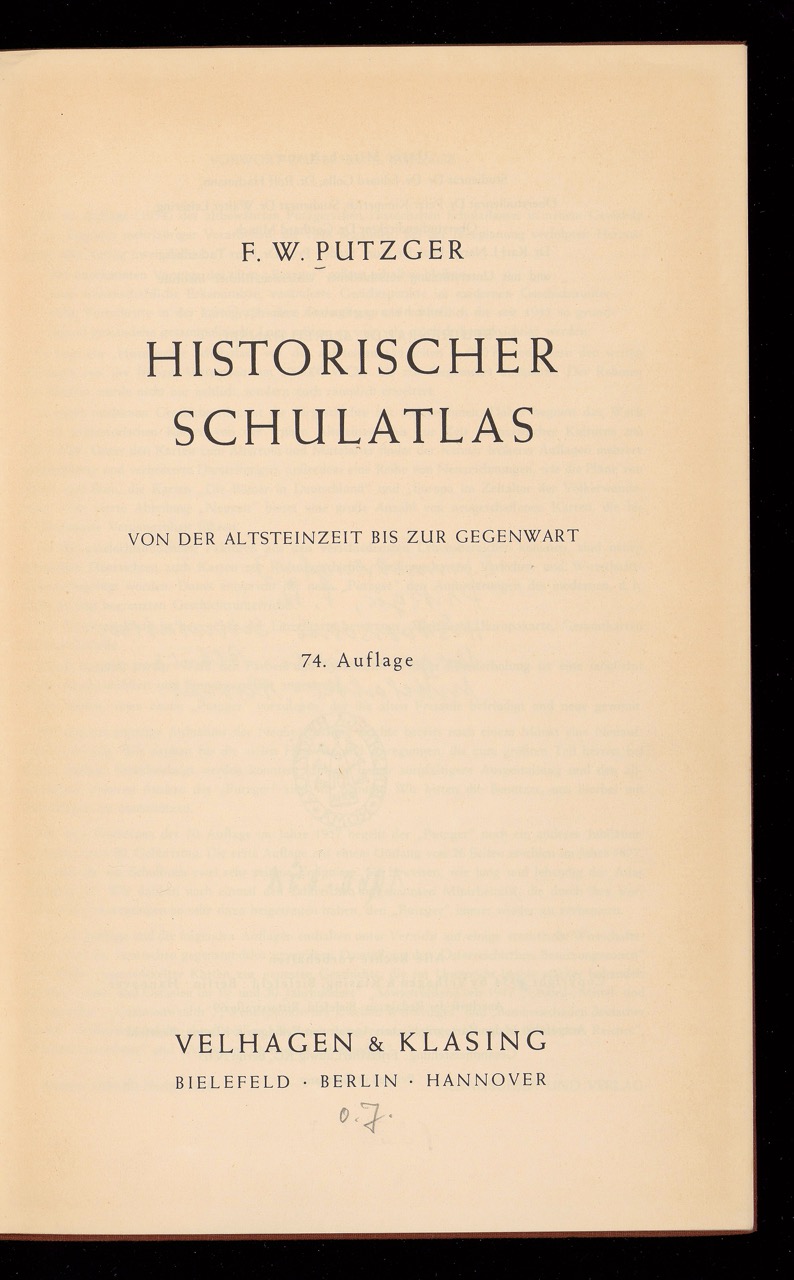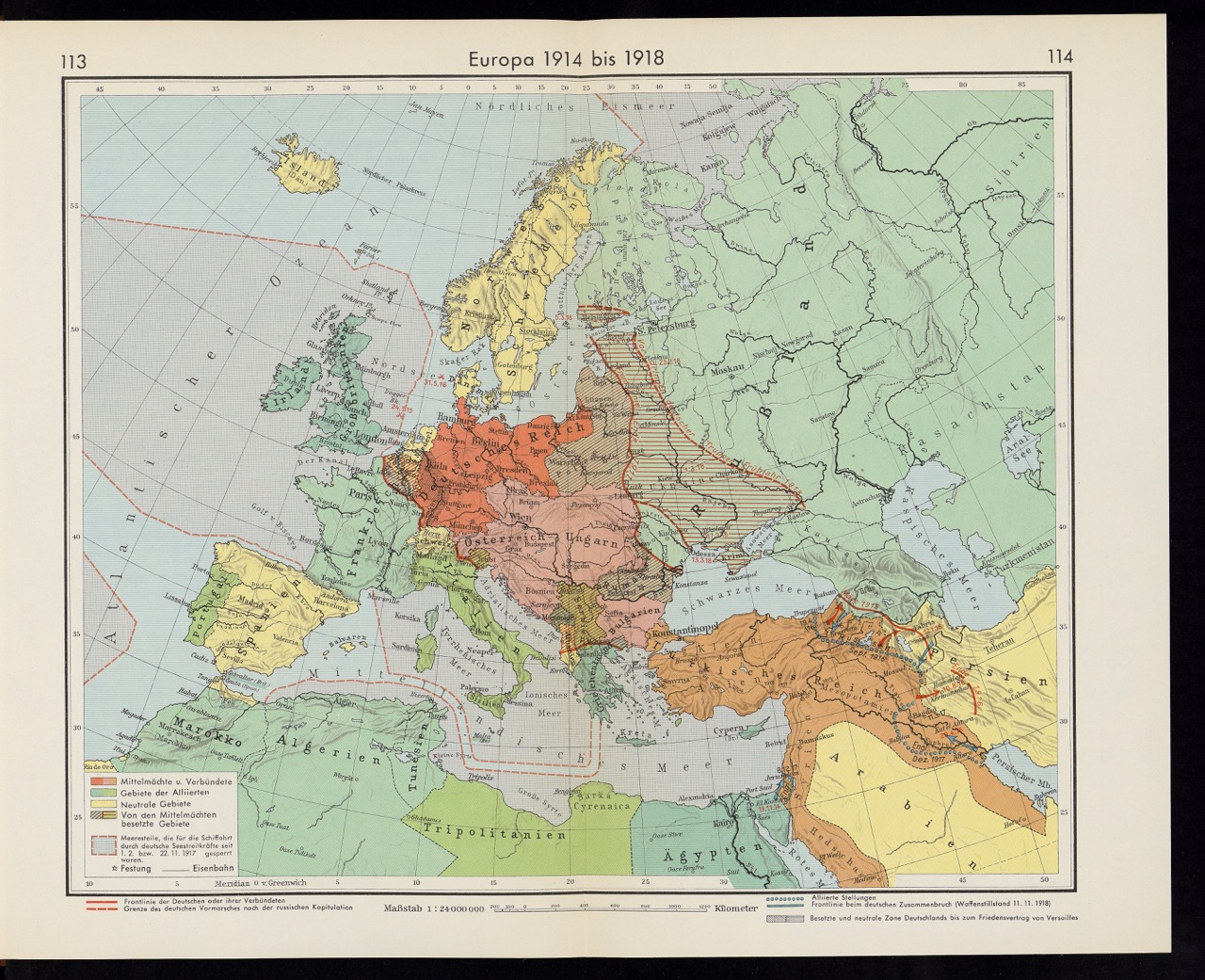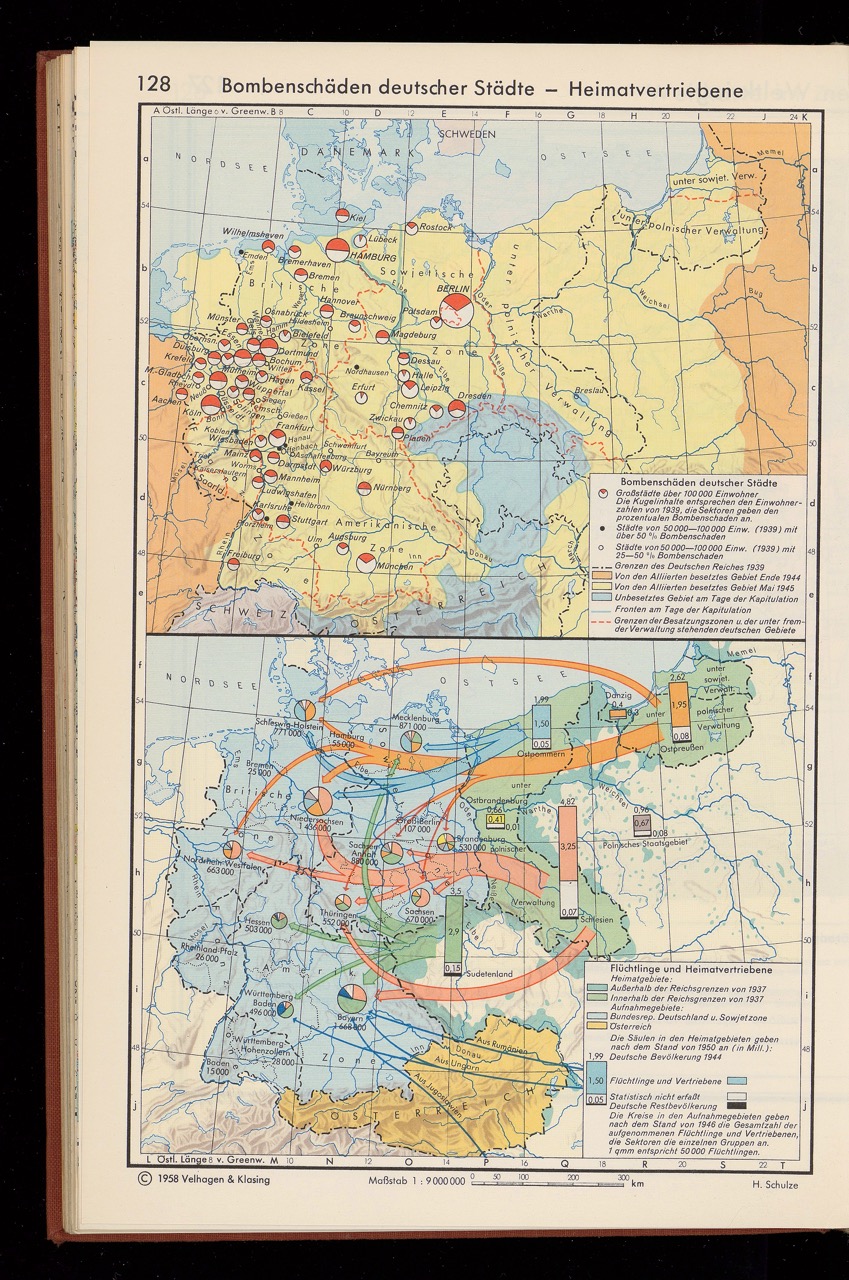Friedrich Wilhelm Putzger: Historischer Schulatlas. Von der Altsteinzeit bis zur Gegenwart [1877], 74th ed., Bielefeld/Berlin/Hannover: Velhagen & Klasing 1958
Signature: Zh 300-5590
Figures: Frontispiece; Map (“Europa 1914 bis 1918”); Map („Europa nach dem Ersten Weltkrieg“); Map („Bombenschäden“)
Friedrich Wilhelm Putzger’s (1849–1913) Historischer Schulatlas / Historischer Weltatlas was first published in 1877. Its author, as he himself claims, was a “Schulmann mit besonderer Neigung für die Geographie” (Hantsche 2003, p. 24). A huge success in Germany, the book initially came out in revised edition every year. Even today, it is published in Putzger’s name, even though after 1888, when the 14th edition came out, he was removed by the editor as the contributing author due to his lack of historical knowledge. Now in its 105th edition, Putzger continues to be used as a textbook in schools, as if in deference to the purpose already anticipated in the title.
Apart from a very short introduction to the long history of Putzger, the edition of 1958 exclusively contains maps and an index. The maps are chronologically ordered, beginning with the very first traces of the appearance of humans as early as 300’000 BC. Its main foci are maps from Europe, especially Central Europe, which is geographically defined as the space between France’s Atlantic coast in the west, Krakow in the east, the border to Denmark in the north, and the border to Italy in the south. On the map of Europe during the First World War, we can see that by spring 1918, the territory of today’s Ukraine (back then Russia) had been completely occupied by the central powers, whereas by the end of the war, the Ukrainische SSR, was established as part of the USSR. [SR]
Link Kubikat
Link Digitized Volume



